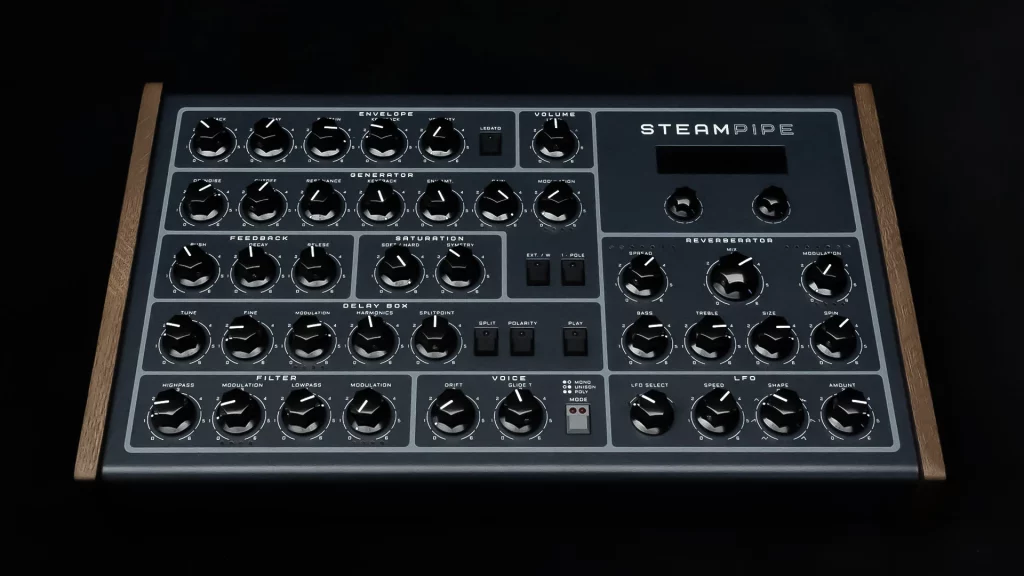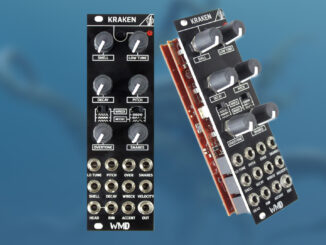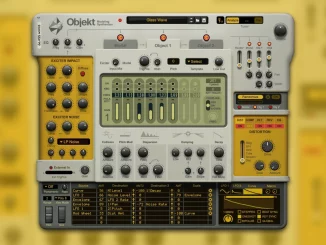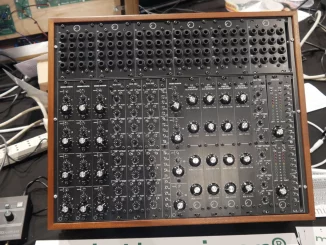Superbooth 23: Erica Synths explores physical modeling synthesis with the Steampipe, a Synthesizer that mimics the tech of wind instruments.
I’m sure my long-term followers know that I’m a big fan of physical modeling synths. One reason why I instantly supported (pre-ordered) the Anyma Omega from Aodyo Instruments on Kickstarter last November. It’s a synthesis form that inspires me. Whether hardware, plugin or a cheap iOS app.
Physical modeling offers sounds that no classic Synthesizer can. Very organic and realistic. After the Korg Z1 etc., it became quiet around PM in hardware. The Anyma Phi was the first hardware synth with this synthesis in a long time. That’s probably what Erica Synths from Latvia thought too. For Superbooth 23, they introduce Steampipe, a new physical modeling Synthesizer in collaboration with the Dutch company 112. dB.
Erica Synths Steampipe
Steampipe is a new 8-voice hardware desktop physical modeling Synthesizer with a special engine. It mimics the way sound is created in wind instruments. However, it’s fine-tuned to create a wide range of sounds, says Erica Synths. You can create strings, pipe organs, wild effects, and beyond.
The synth consists of three sections: steam, pipe, and reverberator. Oh yes, there are no traditional oscillators onboard. So you don’t need to search for waveforms and the other tralala.
It starts with the steam section can be compared to the lungs and month of a musician. The generator creates the flow of air or “steam”, the envelope in this section determines the force with which it is blown out. Then, the DC/noise part is the noise you get when blowing out. Cool, you can replace this DC/Noise with an external audio source.
From here it goes into the pipe section that is comparable to a flute. Here, the tune is formed. Push (in feedback) bounces the steam like it does in a flute and generates the tone. The delay box subsection changes the flute’s tuning and shape.
The last section is the reverbeator which is basically a reverb adding space and ambience to the sound.
Hands-On
On the interface, things look a little different. You have eleven sections: envelope, volume, generator, feedback, saturation, delay box, filter, voice, LFO, reverberator, and display. Each section has a variety of parameters, making Steampipe very hands-on to use.
According to Erica Synths, it is playable with wind MIDI controls and also any MIDI keyboard. But it is optimized for performances with wind instruments. Of course, you can also save your presets in the device. The hardware comes with great sounding presets that covers a wide sonic range, including accoustic, electronic, organic, to very rich.
First Impression
At first glance a very unusual Synthesizer that covers a rather unknown sound field. As a big fan of physical modeling synthesis, I’m curious how Steampipe sounds and how versatile it is. Desktop is an interesting choice. A keyboard with poly aftertouch would have suited the synth very well. Looking forward to get a demo on Superbooth 23.
Erica Synths Steampipe availability and price TBA.
More information here: Erica Synths





If we’re bringing NI Reaktor synths to physical life, please can Weedwacker be next?